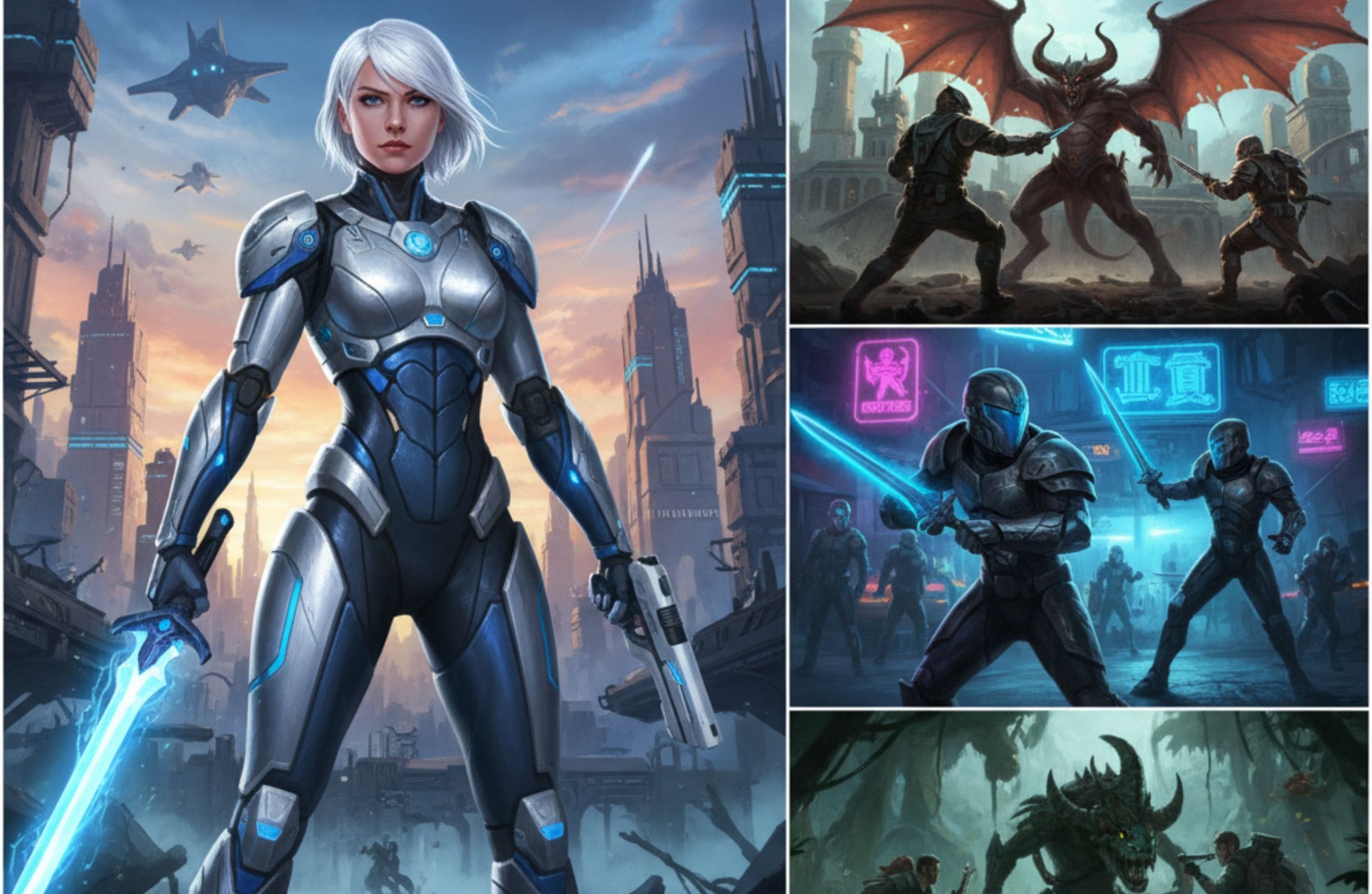Games like Stellar Blade: 10 Best Action RPGs That Demand Precision
Stellar Blade redefined the character action genre by delivering intense, precision-based combat blended with compelling sci-fi world-building. That rush from perfectly parrying a foe, unleashing a Beta Skill, and navigating the stunning, ruined landscapes of Earth is something truly special. Once the credits roll, the question remains: what comes next?
If you crave that specific mix of demanding difficulty, visceral close-quarters fighting, stylish presentation, and a post-apocalyptic vibe, you need the absolute best games like Stellar Blade.
We’ve compiled a list of phenomenal action-RPGs and dedicated hack-and-slash adventures that capture the spirit of its combat dance, where timing is everything. Dive in, grab your sword, and prepare for your next gaming obsession.
Recommended Games: The Ultimate Action Lineup
To help you satisfy that specific itch for high-stakes, stylish action, here are the best games like Stellar Blade that capture the spirit of Eve’s adventure.
NieR: Automata: The Existential Android Epic
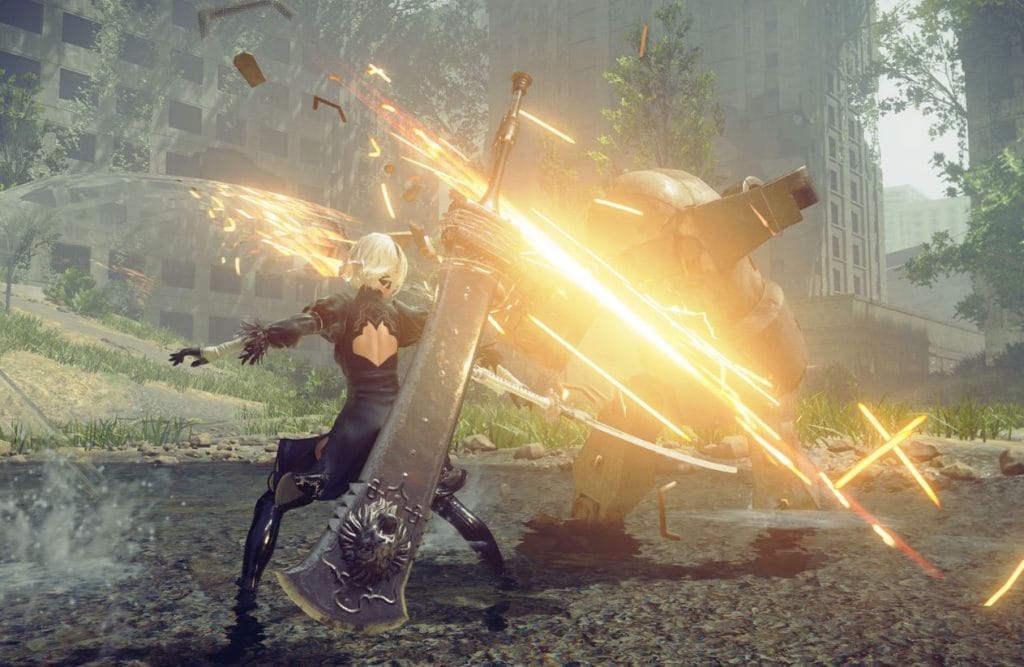
Why It Stands Out
If you were drawn to Stellar Blade’s blend of beautiful post-apocalyptic ruins and its melancholic sci-fi tone, then NieR: Automata is an essential next step. This game stands out not just for its slick action, but for its deeply philosophical and emotionally devastating narrative.
It’s a masterclass in storytelling, asking profound questions about humanity, existentialism, and the nature of conflict through the eyes of android protagonists 2B and 9S. Its soundtrack, often cited as one of the best in gaming history, enhances every haunting moment.
Key Features
- Shifting Perspectives: Gameplay fluidly transitions between 3D character action, twin-stick bullet hell shooting, and 2D side-scrolling, ensuring constant variety.
- Fluid Combat System: Developed by PlatinumGames, the combat is fast, combo-heavy, and highly customizable. Players use a two-weapon system and ranged support from a “Pod” companion to chain stylish attacks.
- The Power of Chips: A deep Plug-in Chip system allows extensive customization, letting you sacrifice utility (like the HUD) for massive combat buffs or even activate an auto-mode on easier difficulties.
- Multiple Endings: Experiencing the true narrative requires multiple playthroughs (A through E), each shifting the perspective and unlocking entirely new content and revelations.
Why It’s a Great Alternative
NieR: Automata is arguably the spiritual predecessor to Stellar Blade. Both games feature a stoic, blade-wielding heroine in a high-tech suit traversing a ruined Earth overrun by biomechanical foes. While Stellar Blade focuses on precise parries and dodges, Automata leans into pure, fast-paced hack-and-slash spectacle, rewarding aggressive, complex combo execution.
If you enjoyed the aesthetic and the female-led sci-fi narrative of Stellar Blade, but are now looking for a richer, more profound story experience, this is one of the definitive games like Stellar Blade you must play.
Bayonetta: Unleash the Umbra Witch
Why It Stands Out
If the flashiest, most over-the-top elements of Stellar Blade‘s combat—the acrobatic maneuvers and the cinematic finishing moves—are what you loved most, then the Bayonetta series is your next destination. This is the gold standard for “stylish action” games, focusing relentlessly on kinetic, aerial, and highly customizable combat that rewards speed, flair, and mastery of move lists over rigid parry timing.
Bayonetta herself, the titular Umbra Witch, is one of gaming’s most confident and charismatic protagonists.
Key Features
- Witch Time: This iconic defensive mechanic is triggered by a perfectly timed dodge, slowing down the world around Bayonetta and allowing you to unleash devastating, uninterrupted combos. This delivers a similar high-stakes, high-reward feeling as Stellar Blade’s Blink/Repulse system.
- Weapons on Hands and Feet: Bayonetta can equip different weapons to all four limbs simultaneously, leading to an enormous number of combo variations, including chaining strikes that incorporate massive, demonic fists and feet.
- Climax Finishers: Combat sequences are frequently capped off with spectacular, gruesome, and frequently hilarious torture attacks and gigantic summons.
- Pure Action Focus: The Bayonetta games are linear, mission-based experiences that strip away exploration elements to focus entirely on combat challenge and scoring based on time, damage taken, and style.
Why It’s a Great Alternative
While Stellar Blade blends its action with Souls-like elements (grounded movement, precise parries), Bayonetta is pure Character Action Game (CAG) adrenaline. It offers the stylish female protagonist, the supernatural enemies, and the high-skill ceiling, but trades sci-fi existentialism for campy, gothic fantasy.
If you want to remove the focus on parrying and go all-in on fluid, endless combos, this is one of the best games like Stellar Blade to scratch that stylish itch.
Devil May Cry 5: The Ultimate Combo Sandbox
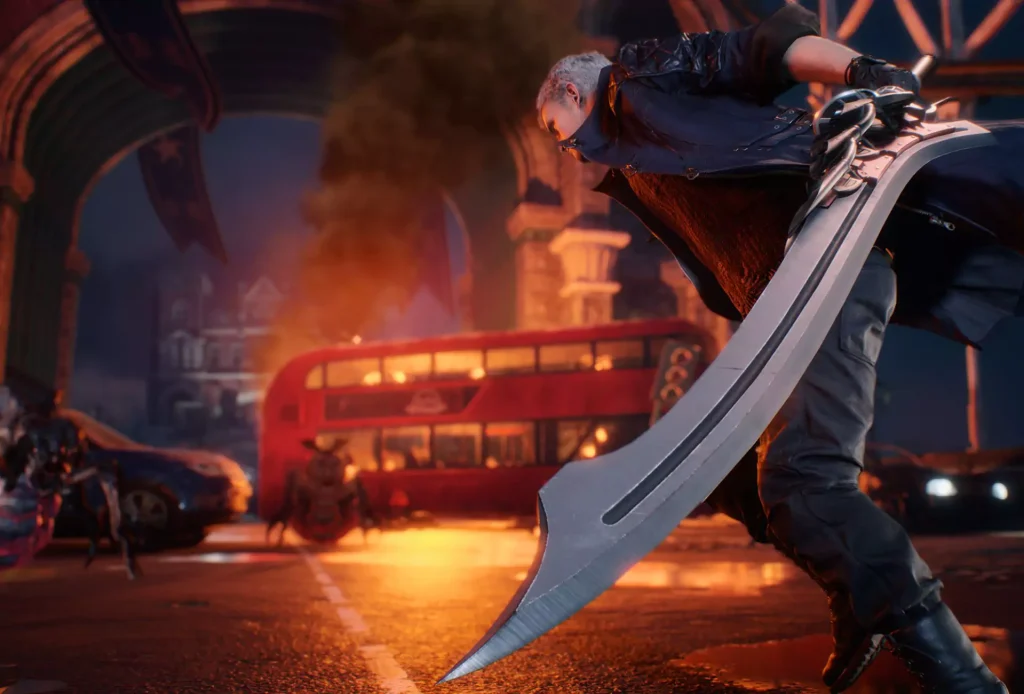
Why It Stands Out
Devil May Cry 5 (DMC5) stands out as the pinnacle of the character action genre’s focus on player expression and complexity. While Stellar Blade emphasizes reactive timing, DMC5 is a maximalist game that hands you an unparalleled arsenal of weapons, styles, and moves, demanding constant strategy shifts to maximize your Style Rank.
The game’s core thrill is challenging the player to create their own spectacular, non-stop combos using all three wildly different playable characters (Nero, Dante, and V).
Key Features
- S-Rank Style Meter: The central mechanic rates your performance based on move variety and combo length, discouraging button-mashing and rewarding deep experimentation. The in-game music dynamic changes as your style rank climbs, driving the pace of combat.
- Three Unique Protagonists: You switch between the powerful, close-range brawler Nero (with his disposable, specialized Devil Breaker arms), the highly technical and versatile Dante (who can switch between four combat styles and a dozen weapons mid-combo), and the strategic, summon-focused V.
- Deep Defensive Options: While focused on offense, the game offers varied defensive techniques, most notably Dante’s Royal Guard style, a high-risk parry mechanic that absorbs enemy attacks and unleashes the stored damage back.
- Massive Move List: The sheer volume of moves, cancels, and air-juggling possibilities means mastering the combat takes hundreds of hours, ensuring a rewarding skill ceiling for dedicated action fans.
Why It’s a Great Alternative
If you loved the satisfaction of mastering Stellar Blade’s skill trees and unleashing Beta Skills, DMC5 offers that feeling multiplied tenfold. It is a game for players who prioritize offensive flair, combo creativity, and an incredible depth of mechanics over the Souls-like rhythm of block-and-parry. It shares the same DNA of over-the-top boss fights and beautiful, hyper-detailed character models as the other games in this list.
Metal Gear Rising: Revengeance: Blade Mode Mayhem
Why It Stands Out
If the core appeal of Stellar Blade for you was the high-stakes dance of defense and counter-attack, then Metal Gear Rising: Revengeance delivers that with a lightning-fast, highly focused spin. This game trades sprawling RPG elements for pure, unadulterated speed and cyborg-ninja action. It stands out for its unique blend of precise timing, over-the-top political melodrama, and one of the most satisfying combat mechanics ever created: Blade Mode.
Key Features
- Deflect Combat: Unlike many hack-and-slash games that prioritize dodging, MGR:R forces you to confront enemies head-on using the deflect mechanic. A perfectly timed parry stuns the enemy and leaves them open for attack.
- Blade Mode: This signature feature allows the player to enter a slow-motion state, precisely line up cuts with a fluid, 360-degree slicing system, and carve up enemies and environments into hundreds of pieces for resource recovery.
- Cyborg Hero: You play as Raiden, a high-frequency blade-wielding cyborg who is absurdly fast and powerful, matching the hyper-mobile fantasy of Eve.
- Iconic Soundtrack: Every boss fight is accompanied by dynamic, vocal heavy metal tracks that intensify as the combat progresses.
Why It’s a Great Alternative
The mechanical DNA shared by both games is unmistakable. Both games emphasize rhythm and discipline, requiring you to read your enemy’s moves and deflect incoming attacks before unleashing powerful, limited special moves (Blade Mode vs. Beta Skills/Burst Skills).
If you found yourself leaning heavily on Eve’s parry to initiate combat flow, you will find a truly refined and rewarding version of that philosophy here. For fans wanting a dedicated character action game that nails the perfect blend of defense and high-damage offense, Metal Gear Rising: Revengeance is a phenomenal choice among games like Stellar Blade.
Astral Chain: Dual-Character Futuristic Combat
Why It Stands Out
Astral Chain is an ambitious action game that stands out due to its core innovation: commanding two characters—your protagonist and an enslaved chimera companion known as a Legion—simultaneously. This mechanic transforms combat from a simple hack-and-slash into a complex, dual-input dance, forcing players to think spatially about positioning their Legion using the “chain” that connects them.
The game features the hallmark tight controls and stylish visuals expected from PlatinumGames, set within a vibrant, neon-drenched sci-fi city under siege.
Key Features
- Dual Control Combat: You control both your character’s weapon (the transforming X-Baton) and your chained Legion, leading to sophisticated team-up attacks, bindings, and environmental puzzles.
- The Astral Chain: The physical chain linking you and your Legion can be used offensively to clothesline enemies, bind them in place, or even launch you toward airborne targets.
- Five Legion Types: You gain five different Legions (Sword, Arrow, Arm, Beast, and Axe), each with unique weapons and special abilities (like the Sword Legion’s precision slice or the Beast Legion’s auto-dodge ability), which you can swap on the fly to suit any combat situation.
- Investigative Elements: Beyond combat, the gameplay includes detective segments where you use your Legions’ unique skills to gather evidence and solve crimes within the city, breaking up the action rhythm.
Why It’s a Great Alternative
For players who enjoyed the high-tech, futuristic aesthetic of Stellar Blade and its emphasis on utilizing a non-human companion (Lily/Drone), Astral Chain takes that concept to a mechanical extreme. It maintains the same pulse-pounding pace and visual flair but offers a dramatically different combat structure focused on coordination and tactical resource management.
If you want a sci-fi action game that adds a deep, multi-layered combat puzzle to master, Astral Chain is an excellent choice.
Scarlet Nexus: Brain-Punk Action RPG
Why It Stands Out
Scarlet Nexus delivers a unique “Brain-Punk” aesthetic, blending traditional sci-fi with psychic abilities and a gorgeous, anime-inspired presentation. The game stands out by making psychokinesis—the ability to move objects with your mind—the core of its fast-paced combat. Unlike many action games where melee and magic are separate, Scarlet Nexus forces players to seamlessly weave physical sword strikes with environmental telekinetic throws, creating a distinct, satisfying flow.
The game also tells its deep story through a “Dual Story” structure, letting you experience the narrative from the perspectives of two different protagonists, Yuito and Kasane.
Key Features
- Psychokinesis Combat: Your primary means of attack involves using telekinesis to quickly grab and hurl debris, cars, and other environmental objects at enemies, immediately following up or leading into melee combos.
- The SAS System: This unique ability allows you to temporarily borrow the psychic powers of your party members (such as Hypervelocity, Duplication, or Pyrokinesis), stacking buffs and creating complex, powerful attack combinations.
- Crush and Brain Crush: Enemies called “Others” have a Crush Gauge, which must be depleted to initiate a stunning and often instantly fatal finisher, similar to the posture-breaking mechanics seen in other difficult action-RPGs.
- Dual Protagonists: Choosing between Yuito and Kasane offers two full, interwoven campaigns that feature different team members, distinct skill trees, and unique boss encounters, providing immense replay value.
Why It’s a Great Alternative
If you enjoyed the high-tech, Japanese-developed sci-fi vibe of Stellar Blade and crave a deep, skill-based action RPG, Scarlet Nexus is a top-tier recommendation. Both games feature excellent animation, intense boss encounters, and deep skill progression systems.
While Stellar Blade centers on timing-based defense, Scarlet Nexus centers on timing-based offense and ability cycling, constantly rewarding players for mastering the rhythm of melee, telekinesis, and borrowed psychic powers. For fans of challenging and stylistic action, it’s one of the quintessential games like Stellar Blade in the modern era.
God of War (2018): Grounded Precision Combat
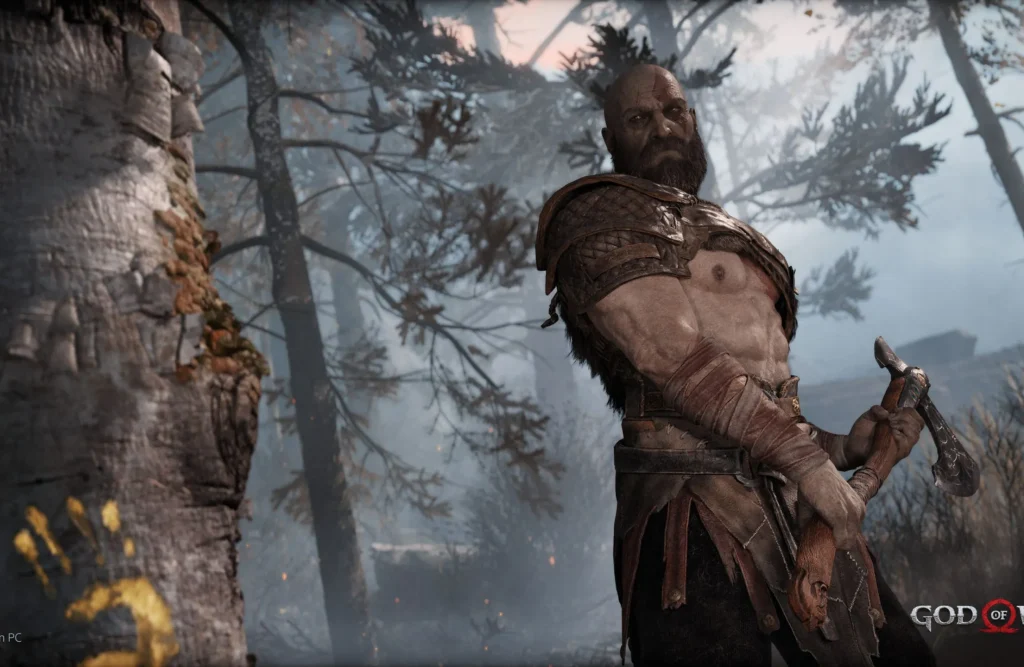
Why It Stands Out
The 2018 soft reboot of God of War fundamentally changed the franchise’s combat, moving from frantic hack-and-slash to grounded, over-the-shoulder action that relies heavily on defensive mastery. The game excels at delivering brutal, deliberate, and satisfying melee combat that makes every axe swing and shield block feel visceral and weighty.
It stands out by combining the cinematic presentation of a blockbuster with mechanics that demand a deep understanding of enemy telegraphs and defensive timing, a key similarity to Eve’s fighting style.
Key Features
- Close-Camera Combat: The intimate, single-shot camera perspective keeps the focus squarely on Kratos, heightening the tension and making combat feel more intense and demanding.
- The Leviathan Axe: This is arguably one of gaming’s greatest weapons, featuring satisfyingly powerful melee combos and the ability to be thrown and recalled instantly, offering dynamic crowd control and ranged options.
- Timing-Based Shield Play: The retractable Guardian Shield is essential, allowing you to block standard attacks but requiring a perfectly timed activation (a parry) to stagger enemies with yellow attack indicators and open them up for heavy punishment.
- Stun Gauge: Enemies feature a dedicated Stun Gauge that, once filled (primarily through bare-handed combat and specific runic attacks), allows Kratos to execute a devastating, cinematic finisher, rewarding tactical aggression.
Why It’s a Great Alternative
God of War shares the same foundational combat philosophy as Stellar Blade: success is dictated by precision defense (parrying/blocking), not button-mashing. Both games feature heavily telegraphed enemy moves and multi-stage boss fights where reading the visual cues is paramount.
If you enjoyed the demanding rhythm of Stellar Blade’s defense-to-offense loop, where you feel the weight behind every successful counter, Kratos’s Norse adventure provides that same highly polished, high-impact gameplay experience.
Sekiro: Shadows Die Twice: The Posture Master
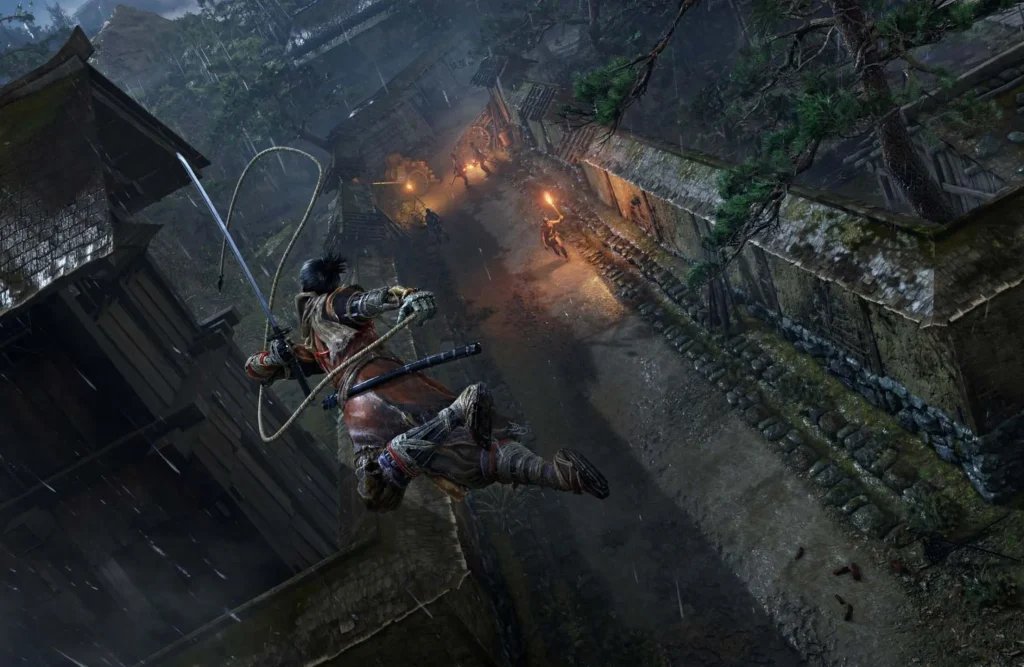
Why It Stands Out
If the moment-to-moment combat in Stellar Blade clicked for you—specifically the intense focus on deflecting and perfect parrying—then Sekiro: Shadows Die Twice is the next logical step in mastering that style.
FromSoftware completely revolutionized their approach to action with this game, creating a system where the primary goal isn’t reducing a health bar, but breaking the opponent’s Posture through aggressive, perfectly timed sword clashes. This game stands out for its unmatched level of combat refinement and high-stakes dueling.
Key Features
- Posture System: Every enemy, from the weakest grunt to the strongest boss, has a posture gauge. Filling this meter through constant aggression and precision deflections leads to an instant Deathblow, making combat a thrilling, non-stop rhythm game of swordplay.
- Deflection Focus: Unlike the large dodge windows of the Souls games, Sekiro requires players to stand their ground and deflect attacks with razor-sharp timing. This high-risk/high-reward system is very reminiscent of Stellar Blade’s emphasis on perfect parries.
- Perilous Attacks: Unblockable attacks marked by a red Kanji symbol require specific, timed counters: a jump over a sweep or a Mikiri Counter for thrusts, mirroring Eve’s need to execute Blink or Repulse.
- Shinobi Prosthetic: In place of multiple weapon loadouts, protagonist Wolf utilizes a variety of tools (flamethrowers, axes, shields) through his prosthetic arm, adding utility and flair to the core sword combat.
Why It’s a Great Alternative
The mechanical core of these two games is remarkably similar. Stellar Blade borrowed heavily from Sekiro’s philosophy: success comes not from chipping away at health, but from rapidly destabilizing your foe using perfectly timed defensive moves to open them up for a devastating finisher.
If you found the challenge and satisfaction of that defensive precision appealing, Sekiro offers the most demanding and rewarding version of that rhythm available. For serious action fans, it is one of the ultimate games like Stellar Blade when pure combat mastery is the goal.
Final Fantasy VII Remake: Tactical Action Fusion
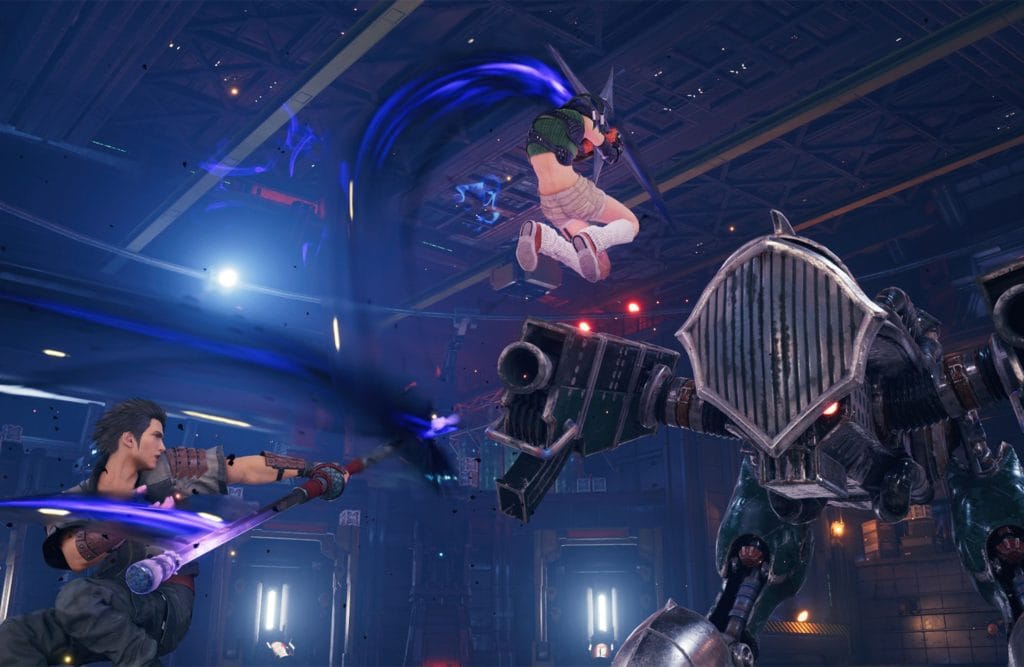
Why It Stands Out
Final Fantasy VII Remake (FF7R) masterfully fuses real-time action with traditional JRPG tactics, creating a combat system that is both instantly exciting and deeply strategic. This game stands out due to its cinematic flair, stunning visual fidelity, and the incredible depth achieved by constantly juggling high-speed melee attacks (like Cloud’s sword strikes or Tifa’s martial arts) with the need to pause the action to issue tactical commands. This constant rhythm of aggression and strategy feels distinctly modern and mechanically complex.
Key Features
- Action/ATB Hybrid: Basic real-time attacks build the ATB (Active Time Battle) Gauge. Filling the gauge slows time, allowing players to pause, select powerful magic spells, special abilities (like Cloud’s Braver), or utility items.
- Character Switching: You can instantly swap control between a party of three, each with their own unique fighting style and strengths (e.g., Cloud is melee heavy, Aerith is a ranged caster).
- Stagger System: Combat revolves around dealing continuous damage to fill an enemy’s Stagger Gauge. A successfully Staggered enemy is momentarily disabled and takes massive damage, similar to breaking a boss’s balance in Stellar Blade.
- Limit Breaks: Powerful, gauge-driven attacks that deliver huge, cinematic damage, providing the same high-impact satisfaction as successfully unleashing a Burst Skill.
Why It’s a Great Alternative
If you loved Stellar Blade’s focus on building a specialized meter (Beta/Burst) through combat mastery to unleash huge, impactful abilities, FF7R offers a parallel system refined over decades of RPG design. It shares the same DNA of polished character models, incredibly detailed world design, and action that is constantly elevated by spectacular, ability-driven moments.
This makes it an excellent choice among games like Stellar Blade if you want to explore the intersection of stylish character action and deep, meter-management RPG combat.
Hi-Fi Rush: The Rhythm of Combat
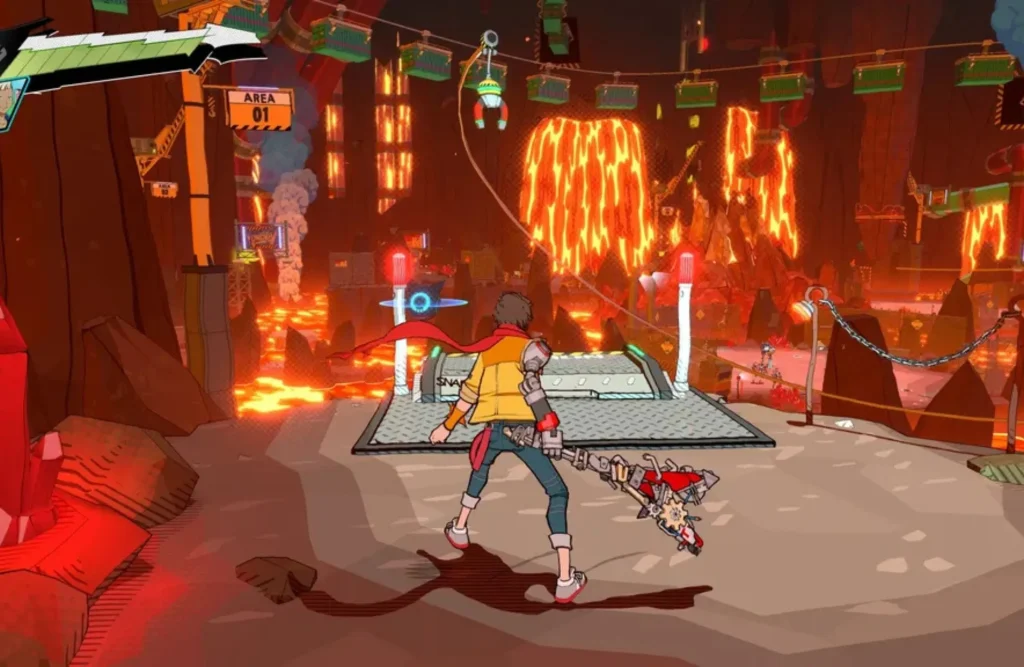
Why It Stands Out
Hi-Fi Rush is the vibrant, rhythm-based answer to traditional character action games. It throws out the grim sci-fi aesthetic for a colorful, cel-shaded world where the entire environment, from lights and animations to combat movements, pulses to an awesome, licensed soundtrack.
The game stands out because its fundamental gameplay mechanic isn’t just Souls-like timing—it’s timing that must be perfectly executed on the beat. It takes the high-risk, high-reward satisfaction of deflection and integrates it into a joyous, rock-and-roll framework.
Key Features
- Rhythm Action: All attacks, dodges, and parries must be timed to the musical beat, creating a constantly engaging flow state that feels more like a dance than a grind.
- On-Beat Parrying: The core combat challenge revolves around successful, timed deflection of enemy attacks, which requires recognizing visual and auditory cues that align with the music.
- Companion Synergy: Protagonist Chai fights alongside companions who can be summoned via an assist mechanic to execute powerful, beat-synced attacks against shielded or specific enemy types.
- Stylish Scoring: Combat encounters are scored, rewarding players for move variation and maintaining the beat, much like the style meters in games like Devil May Cry.
Why It’s a Great Alternative
If the aspect of Stellar Blade that truly resonated was the demanding precision and flow of perfectly timing your parries and counters, Hi-Fi Rush offers a unique spin on that concept. It exchanges the intense pressure of Sekiro-style deflection for a lively, beat-driven challenge that feels incredibly satisfying to master. For players who enjoy games where tight timing is paramount, this musical gem offers a brilliant contrast to the often-darker tone of other games like Stellar Blade.
Also check our article: Games Like Slay the Spire: The 9 Best Roguelike Deck-Builders

